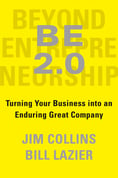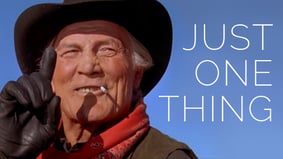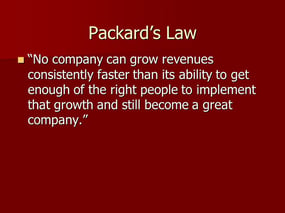 “One central idea I try to communicate in my courses is that history is the study of choices. It follows no predetermined script. History is determined by the choices made by people both famous and unknown.”
“One central idea I try to communicate in my courses is that history is the study of choices. It follows no predetermined script. History is determined by the choices made by people both famous and unknown.”
“History is the study of surprises.” ~ Professor Edward T. O’Donnell
Hard to argue these quotes, especially after the past year we’ve endured.
In Beyond Entrepreneurship 2.0: Turning Your Business into an Enduring Great Company by Jim Collins and Bill Lazier, Collins notes, “If the first two decades of the twenty-first century have taught us anything, it’s that uncertainty is chronic; instability is permanent; disruption is common; and we can neither predict nor govern events. There will be no “new normal”; there will only be a continuous series of “not normal” episodes, defying prediction and unforeseen by most of us until they happen.  And that means doubling down on the “first who” principle…..your best hedge against unexpected obstacles is making sure you have the right partners on the other end of the rope, people who can adapt to whatever you encounter on the mountain. Even the most visionary among us cannot always predict which ideas will work. And no one can reliably predict what the future will throw at us or even what’s coming just around the corner.”
And that means doubling down on the “first who” principle…..your best hedge against unexpected obstacles is making sure you have the right partners on the other end of the rope, people who can adapt to whatever you encounter on the mountain. Even the most visionary among us cannot always predict which ideas will work. And no one can reliably predict what the future will throw at us or even what’s coming just around the corner.”
Your Missing Measurement
Collins’ emphasis on “First Who, Then What” is legendary. He shared this principle of measuring key people in key seats in a Growth Summit I attended in Dallas in October of 2009, Jim Collins –Your Company Key Indicator for People - Corrections [Dallas Growth Summit].
In BE 2.0 he asks “what’s the number one, first-priority metric you look at? Is it sales? Or profitability? Or cash flow?”
Collins believes, “there’s one metric that towers above all others, one metric to track with obsession, one metric upon which the greatness of the entire enterprise hinges.”
Ironically, Collins notes for most companies, it’s rarely the metric first discussed—if it’s discussed at all.
 This metric is the percentage of key seats on the bus filled with the RIGHT people for those seats.
This metric is the percentage of key seats on the bus filled with the RIGHT people for those seats.
What percentage of your key seats are filled with the right people?
If your less than 90 percent, you’ve just identified your number one priority.
A truly great company should strive to achieve 90 percent of your key seats filled with the right people.
Why not 100 percent? Collins feels at any given moment, at least some key seats will be temporarily unfilled.
You could recently have moved someone into a key seat, and you’re still unsure how well they will perform in it. In some cases, the demands of a key seat grow faster than the capabilities of the person in it.
Organization Key Function Chart – FACe - Function Accountability Chart
What makes for a key seat? Collins provides the following criteria:
Any seat meeting any one of the following three conditions qualifies as key:
- The person in that seat has the power to make significant People decisions.
- Failure in the seat could expose the entire enterprise to significant risk or potential catastrophe.
- Success in the seat would have a significantly outsized impact on the company’s success.
One of the first exercises we do as Scaling Up/3HAG WAY coaches is to ask you to complete your organizational key function chart or FACe tool. (See image)
This exercise should identify your key seats and discover:
- Where do you have more than one person in a seat,
- Where a person is occupying more than one seat,
- Whether or not you would enthusiastically rehire the person how is currently occupying this seat.
For a more in-depth understanding of the value of this tool read, When Everyone’s Responsible, No One Is!
Missing Chapter in Beyond Entrepreneurship “GREAT VISION WITHOUT GREAT PEOPLE IS IRRELEVANT”
Collins would correct one thing from his first edition of Beyond Entrepreneurship: a chapter on the importance of people. This update of his first book, dedicated to his mentor and co-author Bill Lazier includes this change, chapter 2 GREAT VISION WITHOUT GREAT PEOPLE IS IRRELEVANT.
This echoes the theme from Good to Great of Packard’s Law
 Ed Catmull, the co-founder of Pixar Animation Studios and a close colleague of Steve Jobs, believes you can even start with a bad idea and still end up with a great result if you have the right people.
Ed Catmull, the co-founder of Pixar Animation Studios and a close colleague of Steve Jobs, believes you can even start with a bad idea and still end up with a great result if you have the right people.
Despite nearly every Pixar movie enduring episodes of crisis, Catmull’s “first who” strategy led to fourteen number one movies in a row.
The question of whom to put in your key seats is crucial when you cannot easily get people off your bus. This might be because of family dynamics, quasi-tenured employees, internal politics, or even simple loyalty to some of the people who contributed early on to the company’s success.
Whatever your constraints—and whatever the reasons—you still have the task to get your key seats filled with the right people.
To create an environment where everyone is inspired to give their best, contact us today to schedule a free exploratory meeting.
Growth demands Strategic Discipline.
 Building an enduring great organization requires disciplined people, disciplined thought, disciplined action, superior results, producing a distinctive impact in the world.
Building an enduring great organization requires disciplined people, disciplined thought, disciplined action, superior results, producing a distinctive impact in the world.
Discipline sustains momentum, over a long period of time, laying the foundations for lasting endurance.
A winning habit starts with 3 Strategic Disciplines: Priority, Metrics, and Meeting Rhythms. Forecasting, accountability, individual, and team performance improve dramatically.-2.jpg?width=286&name=3%20Disciplines%20of%20Execution%20(Strategic%20Discipline)-2.jpg)
Meeting Rhythms achieve a disciplined focus on performance metrics to drive growth.
Let Positioning Systems help your business achieve these outcomes on the Four most Important Decisions your business faces:
|
DECISION |
RESULT/OUTCOME |
|
PEOPLE |
|
|
STRATEGY |
|
|
EXECUTION |
|
|
CASH |
|
Positioning Systems helps mid-sized ($5M - $250M) business Scale-UP. We align your business to focus on Your One Thing! Contact dwick@positioningsystems.com to Scale Up your business! Take our Four Decisions Needs Assessment to discover how your business measures against other Scaled Up companies. We’ll contact you.
 NEXT BLOG – Know When to Shift from “Develop” to “Replace”
NEXT BLOG – Know When to Shift from “Develop” to “Replace”
Which way do you tilt—invest more to develop the person or act decisively to replace the person? (Replacing the person doesn’t necessarily mean kicking them off the bus; you might move them to a different seat.)
There isn’t a right answer. The best leaders Collins studied, saw a 50/50 split between developers and those who tilted toward replacement. Next blog we explore these leaders and how to decide to develop or replace your people.






.jpeg?width=150&height=135&name=Hand%20with%20marker%20writing%20the%20question%20Whats%20Next_%20(1).jpeg)

